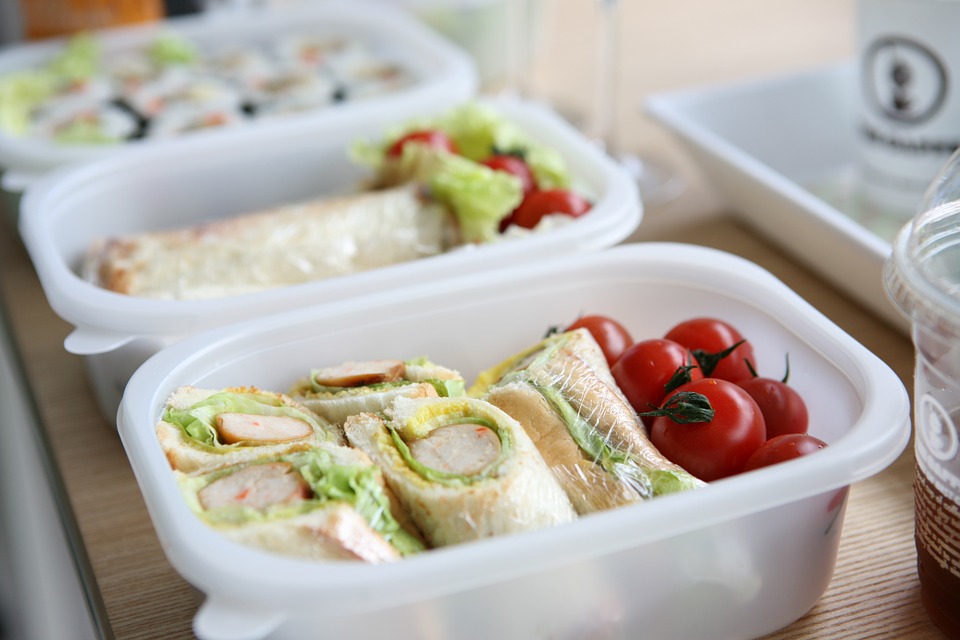When your kids are home, it’s far easier to supervise their food intake, helping them avoid trigger foods that could set off their allergies. Once you send them out the door to school, however, you relinquish significant control over what they eat.

(Pixabay / jelly)
School lunch can be a fraught topic. In 2003, a student died after having an allergic reaction to cross-contaminated French fries in the school cafeteria. Schools deal with allergies in different ways. For example, schools may designate an allergen-free lunch table in the cafeteria. This can be especially helpful if kids’ allergies are so severe that they react to even airborne traces of food proteins and are at risk for a life-threatening anaphylactic reaction.
If your child has allergies, your safest bet will likely be to pack their lunch or assist them in packing their own lunch. This won’t eliminate all problems; kids may still swap lunch items in the cafeteria. Your child may also be offered treats provided in class holiday parties or celebrations of classmates’ birthdays. Make sure to explain to your kids that they should not trade food with other students. Also, teach them which foods they can and can’t eat so they can know to refuse certain treats. Help them be assertive in communicating the nature and scope of their allergies to teachers and other authority figures. If kids have doubts about food items, make sure that they ask a teacher for help or simply abstain from eating questionable items.
It is estimated that an average of two kids per classroom have food allergies, so your child will not likely be unique. If your child has multiple food allergies, you may find that the range of what they can eat is quite narrow. Do the best you can to maintain variety in their school lunch so that they can become accustomed to trying new things. The Internet is a great source of allergen-free lunch recipes.
Informing School Officials
If you haven’t talked to school officials about your child’s allergies, schedule a meeting with administrators, affected teachers, the school nurse, the cafeteria manager, and any others who can help protect your child’s best interests. Make sure to delineate:
- Any foods to which your child reacts
- Your child’s symptoms
- A treatment plan (in case your child has a reaction)
- Emergency contacts
You can also include a photograph of your child if appropriate.
If your child does want to purchase school lunch, get the lunch calendar and determine which menu items are allergen-free. You should meet with the school’s cafeteria director to explain your child’s allergies. Inform the cafeteria staff that you need to know if any ingredients change. For example, if a non-dairy dessert gets swapped out for a dairy version and your child is allergic to milk, you need to know about it. In addition, make sure that the staff is not using the same tools to handle different foods. This practice could cause cross-contamination.
Symptoms
Kids food allergy symptoms may manifest through eczema, hives, wheezing, asthma, allergic rhinitis, and digestive problems such as cramps, vomiting, diarrhea, gas, and bloating. Food allergies may also lead to eosinophilic esophagitis (EE), which is characterized by an inflamed esophagus and leads to trouble swallowing, food impaction, chest pain, heartburn, and vomiting. For many people with EE, the symptoms look a lot like acid reflux, but they don’t respond to traditional reflux treatment.
Food Allergy Treatment
For food allergy treatment or eosinophilic esophagitis treatment, ask your allergy doctor about sublingual immunotherapy. It works a lot like allergy shots in that it desensitizes the body to trigger allergens by gradually exposing it to the very allergen extracts to which it reacts.
With allergy shots (subcutaneous immunotherapy), antigen is injected into the skin. With oral allergy drops (sublingual immunotherapy), the antigen is dispensed as liquid droplets under the tongue. Sublingual immunotherapy for food allergies is one of the most promising treatments in the field of allergies today and has been shown to be effective for nut, wheat, and egg allergy treatment and more.


